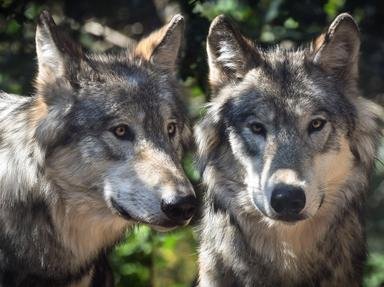Quiz Answer Key and Fun Facts
1. How do wolves greet one another?
2. Which of these is not a reason that wolves howl?
3. When are wolf pups born?
4. Which of these is not true about wolf pups?
5. How are wolf pups brought up?
6. What are wolves who leave the pack called?
7. Which of these is NOT true about the interaction between wolves and humans?
8. How do wolves show where they stand in the pack hierarchy?
9. What does a dominant wolf do if a subservient wolf tries to resist its authority?
10. When the subservient wolf is ready to submit, how will it show it?
Source: Author
kirlin
This quiz was reviewed by FunTrivia editor
crisw before going online.
Any errors found in FunTrivia content are routinely corrected through our feedback system.


